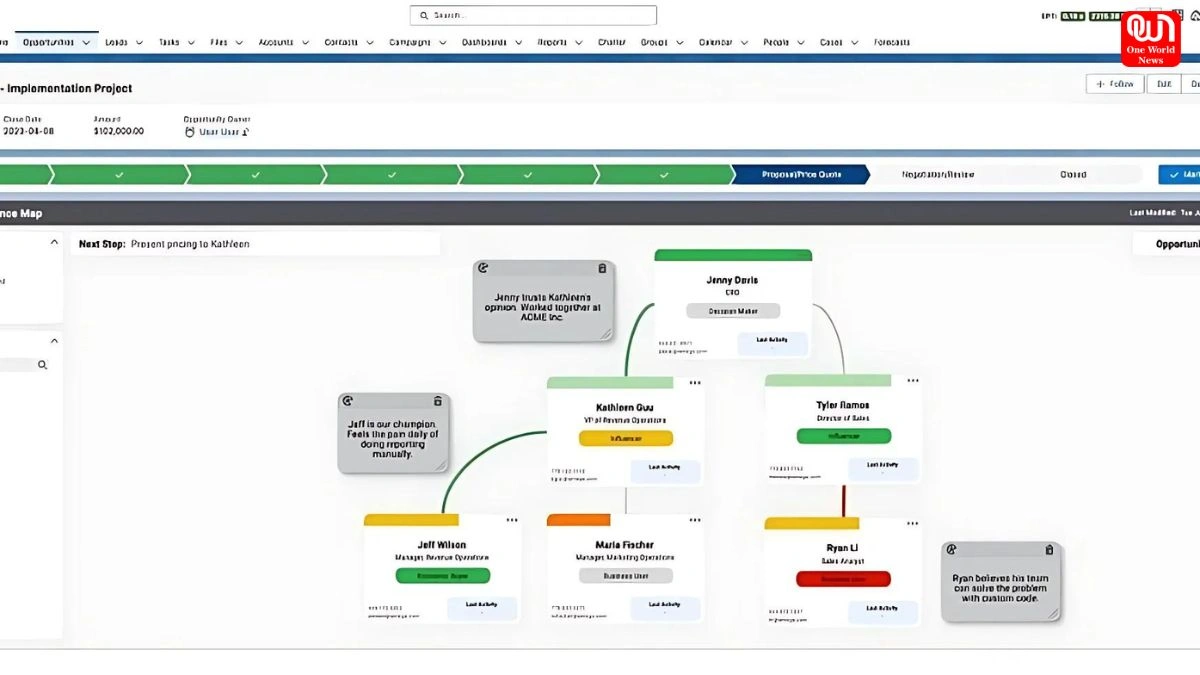Strength of Relationship Mapping in Sales Force operations
Strength of Relationship Mapping in Sales Force operations
Strength of Relationship Mapping in Sales Force operations
In an ever-evolving sales landscape, harnessing the full capacity of your sales force is paramount for success. Relationship mapping emerges as a sophisticated tool in this effort, providing invaluable insights into the intricate web of client relationships. It goes beyond mere networking, transforming how sales professionals connect with clients and prospects at a strategic level. By exploring the far-reaching implications of relationship mapping in this article, you can uncover methods to enhance your sales operations and foster deeper client engagement. Keep reading to delve into the transformative world of relationship intelligence.
Unlocking the Potential of Relationship Mapping in Sales Operations
The application of relationship mapping within sales operations serves as a strategic pivot to comprehending the nuanced dynamics between clients and businesses. By visualizing connections, sales teams can identify key stakeholders and decision-makers pivotal to the sales process. This form of mapping transcends basic contact management and evolves into a strategic asset for anyone involved in sales.
With clarity on the intricate network of influence within a client’s organization, sales professionals can tailor their approach to address specific needs and concerns. Relationship mapping sheds light on the informal power structures and alliances that can either fast-track or hinder sales efforts. It effectively transforms a static list of contacts into a dynamic web of relationships, each with its potential to impact a deal.
Implementing a salesforce relationship mapping tool can be the linchpin for unlocking new opportunities. By having a visual representation of relationships, sales teams are better equipped to approach complex deals with a comprehensive strategy in mind. This aids in prioritizing efforts and recognizing areas of potential development or resistance.
Relationship Mapping: A Key To Understanding Complex B2B Sales Dynamics
Alt text: Team members creating a sales strategy using the salesforce relationship mapping system.
In the realm of B2B sales, the complexity of transactions can often be daunting. Multiple stakeholders and long sales cycles make relationship mapping not just useful but essential. It offers a scaffold over which sales teams can build their understanding of the client company and how to effectively engage with it over time.
For complex sales scenarios involving several departments or teams, relationship maps serve as a vital reference point. They clarify who needs to be involved at which stages of the sales process and what their motivations may be. Such insights are integral in designing a sales strategy that accounts for the dynamics of multi-tiered decision-making processes.
A thorough relationship map highlights both allies and adversaries within the client’s organization. It is important for sales professionals to not only strengthen ties with champions but also to convert skeptics into supporters or at least neutral stakeholders. Carefully managing these relationships is a subtle art that can dramatically shift the outcome.
Integrating Relationship Maps With Customer Relationship Management (CRM) for Sales Maximization
For sales forces aiming to maximize their outcomes, the integration of relationship maps into CRM systems is a game-changing strategy. This integration means a cohesive platform where data informs strategy and personal interactions are tracked and leveraged for future opportunities.
CRM systems, when enriched with relationship mapping capabilities, provide a single source of truth for all customer interactions. Sales professionals can benefit from a historical narrative of each relationship and view this within the larger picture of the client’s organizational network.
This technology fusion empowers sales teams with both macro and micro insights.
The integration also streamlines data accessibility, ensuring that relationship dynamics are not siloed within individual sales members’ knowledge but are available across the organization. This fosters better communication and a unified sales approach, reducing the risks of misaligned efforts.
Leveraging Relationship Intelligence To Accelerate the Sales Cycle
Alt text: Two employees looking at their organization’s sales cycle using the metrics gained from using the Salesforce relationship mapping tool.
Accelerating the sales cycle is a priority for most sales organizations, and relationship intelligence plays an essential role in this acceleration. By fully understanding who influences the buying decision and how, sales professionals can more effectively address concerns and present solutions, moving the sales process forward briskly.
When relationship intelligence is applied efficiently, sales cycles shorten because time is not lost on ineffective meetings or communications that miss the mark. Sales teams can interact with the right people at the right time, leveraging the insights gathered to make every interaction count towards closing a deal.
Overall, relationship mapping is an indispensable tool that can significantly enhance the strategic capabilities of a sales force. It personalizes and deepens the connection to clients, paving the way for better communication, understanding, and, ultimately, sales success.
Through the integration of relationship intelligence and CRM systems, sales teams can ensure they are primed to address the complexities of modern sales with sophisticated and innovative strategies.
We’re now on WhatsApp. Click to join.
Like this post?
Register at One World News to never miss out on videos, celeb interviews, and best reads.








